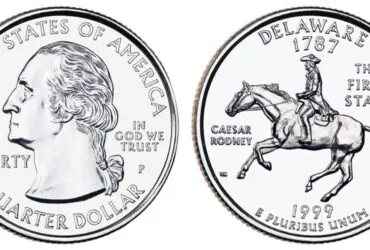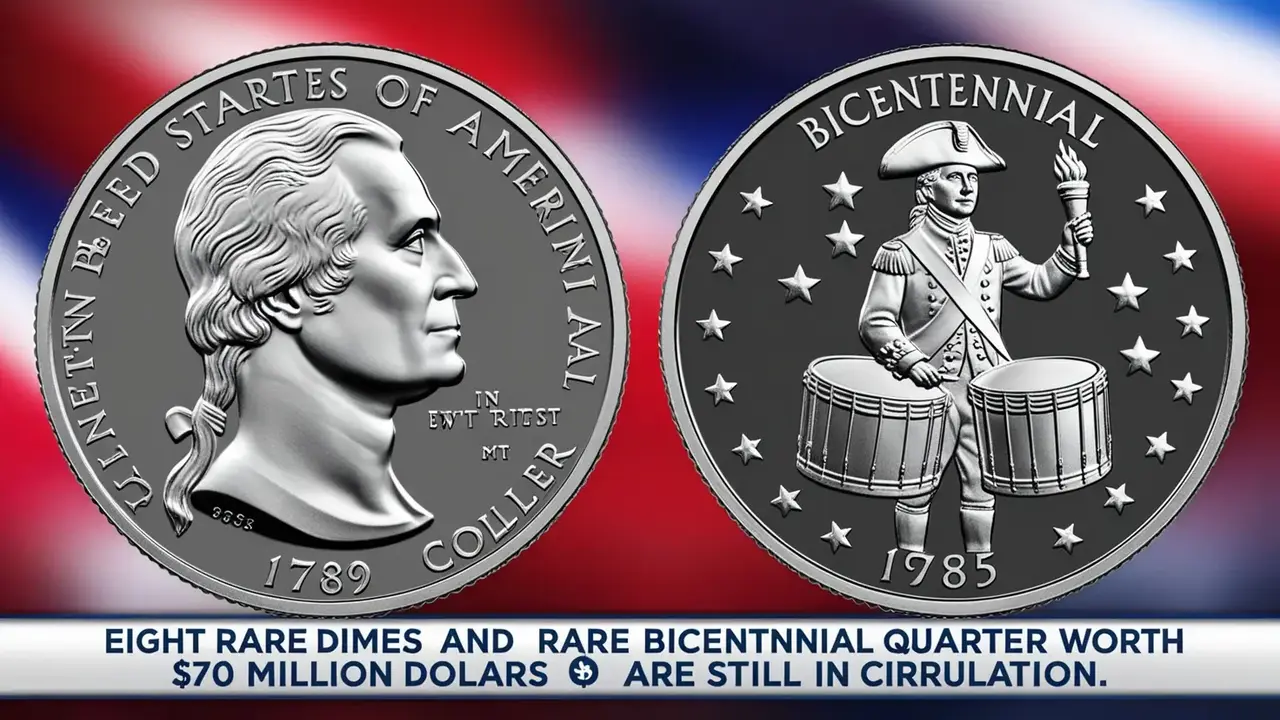Quarters are some of the most widely circulated coins in the United States, but did you know that some could be worth far more than their face value? Certain quarters, due to their rarity, minting errors, or unique history, have become highly valuable to collectors. By learning what to look for, you might uncover a treasure hiding in plain sight. Here’s your guide to spotting rare U.S. quarters that could turn spare change into a fortune.
1. 1932-D and 1932-S Washington Quarters
Why They’re Rare
These quarters were part of the first Washington quarter series, issued to commemorate George Washington’s 200th birthday. The Denver (D) and San Francisco (S) mints produced only a limited number, making these coins especially scarce.
Estimated Value
- Circulated Condition: $100–$500
- Mint State (MS-65 or higher): $1,000–$15,000
How to Identify Them
Look for the D or S mintmark below the eagle on the reverse side. These coins’ low mintage numbers make them a must-check for any collector.
2. 1970-S Proof Quarter with Doubled Die Obverse
What Makes It Special
This proof coin features a minting error known as a doubled die obverse, where parts of the design appear duplicated due to a misaligned die.
Estimated Value
$1,000–$3,000+, depending on the severity of the doubling.
How to Identify It
Use a magnifying glass to inspect the inscriptions like LIBERTY or IN GOD WE TRUST for signs of doubling.
3. 1999 Delaware “Spitting Horse” Quarter
Why It’s Collectible
The “Spitting Horse” error, caused by a die crack, creates a line near the horse’s mouth, making it look like it’s spitting.
Estimated Value
- Circulated Condition: $20–$50
- Uncirculated Condition: Up to $100
How to Identify It
Examine the reverse of the Delaware quarter for a raised line extending from the horse’s mouth.
4. 2004 Wisconsin Quarter with Extra Leaf Error
What Makes It Unique
Some Wisconsin quarters feature an extra high or low leaf on the corn stalk, caused by die gouges during production.
Estimated Value
- Circulated Condition: $50–$300
- Uncirculated Condition: $1,000+
How to Identify It
Inspect the corn stalk on the reverse for an extra leaf, either slightly above or below the main leaves.
5. 2005 Minnesota Quarter with Doubled Die Reverse
Why It’s Valuable
This error coin features a doubled die reverse, where extra tree designs appear near the main cluster of trees.
Estimated Value
- Circulated Condition: $50–$100
- Uncirculated Condition: Up to $1,500
How to Identify It
Look closely at the trees on the reverse side for signs of doubling.
6. 1996 Quarter with Missing Clad Layer
What Makes It Rare
This error occurs when the coin’s outer clad layer is missing, exposing the copper core and creating a unique appearance.
Estimated Value
$100–$500 or more, depending on condition.
How to Identify It
The coin will have a coppery appearance and weigh less than a standard quarter.
7. 1823/2 Capped Bust Quarter
Why It’s Rare
This quarter features an overdate error, where the original date (1822) is visible beneath the corrected 1823.
Estimated Value
- Good Condition: $5,000+
- Excellent Condition: $100,000 or more
How to Identify It
Examine the date on the obverse side for signs of the overdate error.
8. Bicentennial Quarters (1976) with Errors or High Grades
Why They’re Special
While Bicentennial quarters are common, rare error coins or high-grade examples can fetch impressive prices.
Estimated Value
- High-Grade Coins (MS-67 or higher): $3,000+
- Error Coins: $500–$5,000
How to Identify Them
Look for doubling, off-center strikes, or pristine condition. Bicentennial quarters with “S” mintmarks may also contain silver.
How to Spot Rare Quarters in Your Pocket Change
1. Check Mintmarks
- D: Denver
- S: San Francisco (proof or silver coins)
- No mintmark: Philadelphia
2. Inspect for Errors
Use a magnifying glass or microscope to look for doubled dies, die cracks, or missing details.
3. Examine Condition
Coins in pristine condition, free of scratches or wear, are more valuable. Avoid cleaning them, as this can lower their worth.
4. Weigh the Coin
Use a digital scale to check for weight discrepancies caused by errors like missing clad layers.
Where to Sell Rare Quarters
1. Auction Houses
- Heritage Auctions
- Stack’s Bowers Galleries
2. Reputable Coin Dealers
Get your coin appraised by a professional dealer to determine its value and find serious buyers.
3. Online Platforms
- eBay: Ideal for reaching a broad audience.
- GreatCollections: Preferred by experienced collectors.
Final Thoughts
Your pocket change might hold more than just face value—it could be the key to a valuable discovery. By carefully inspecting your quarters for rare dates, errors, and mintmarks, you could uncover hidden treasures worth hundreds, thousands, or even more. Start checking your change today; you never know what you might find!











